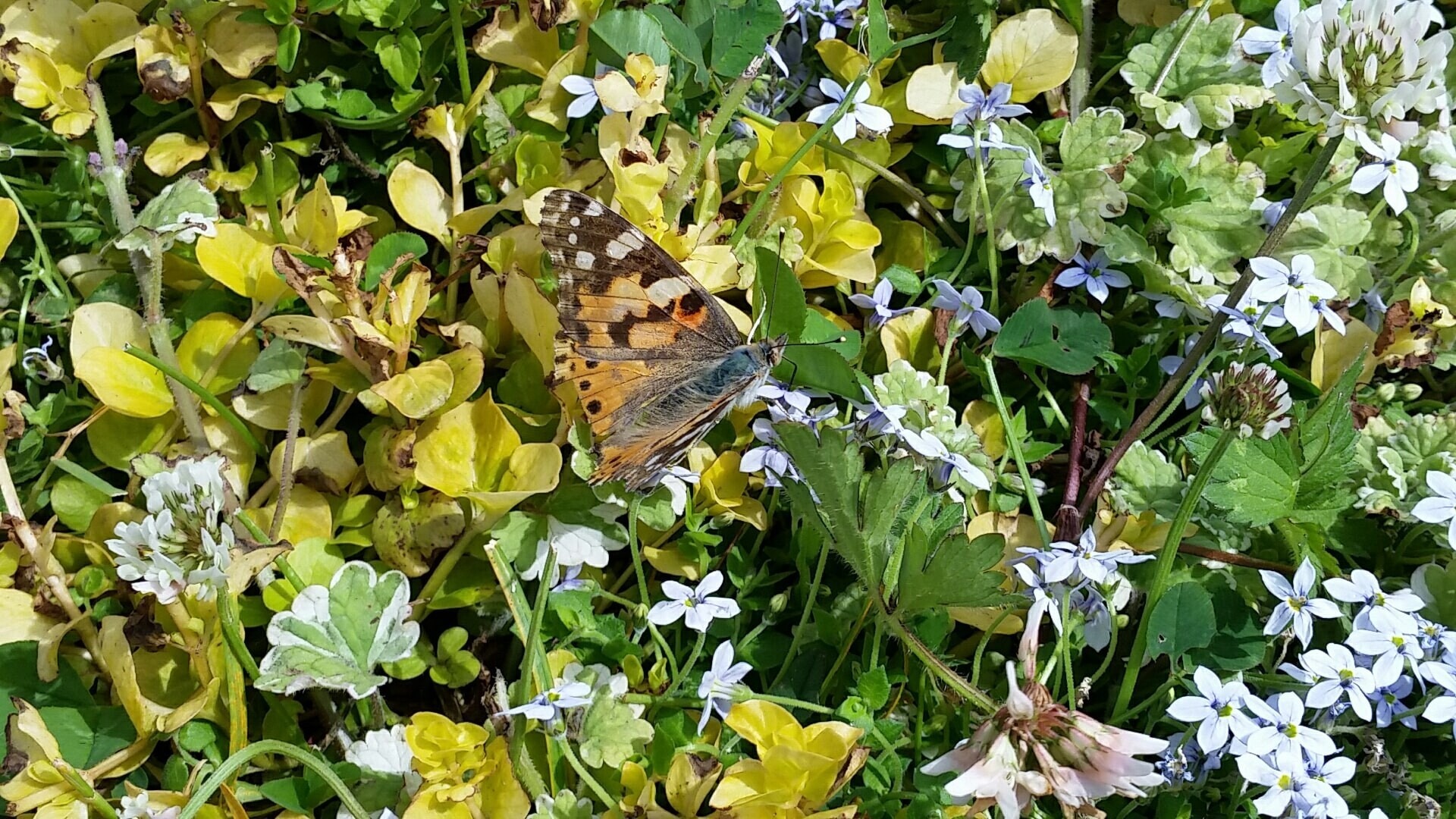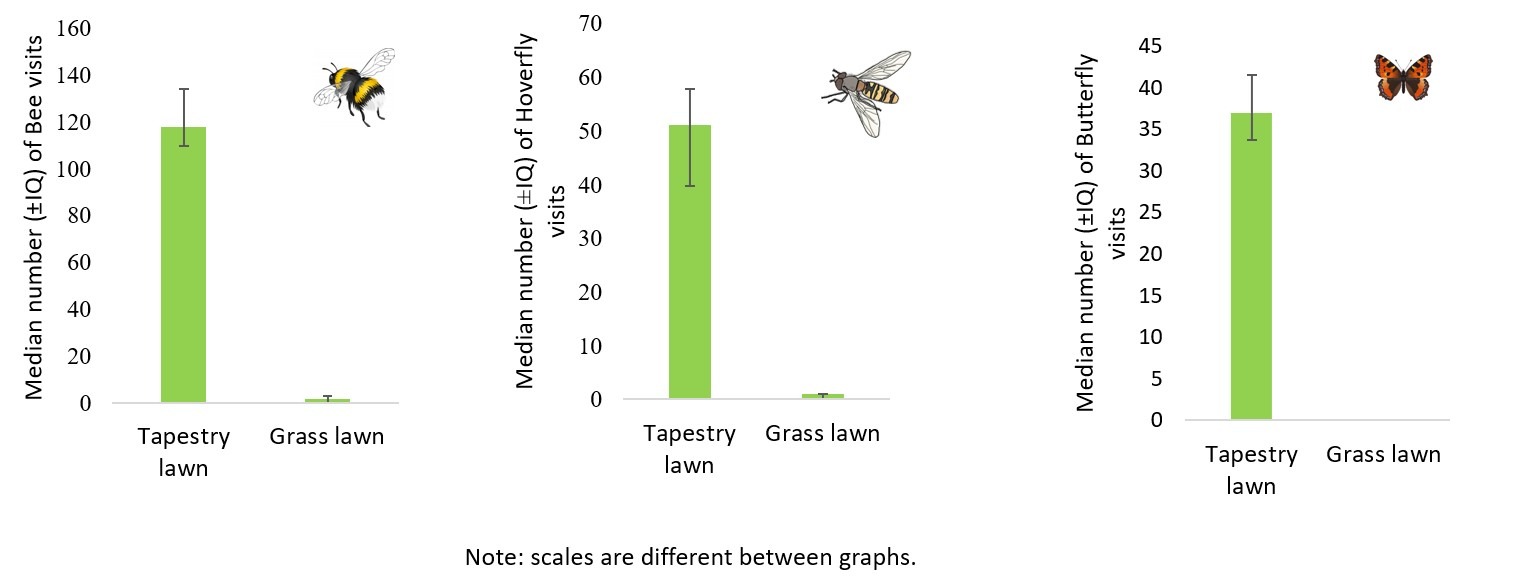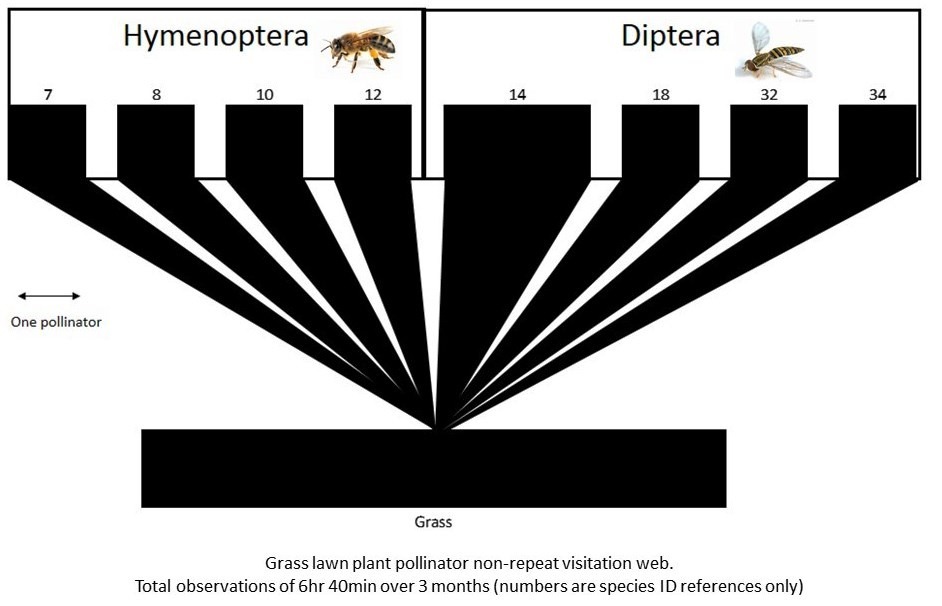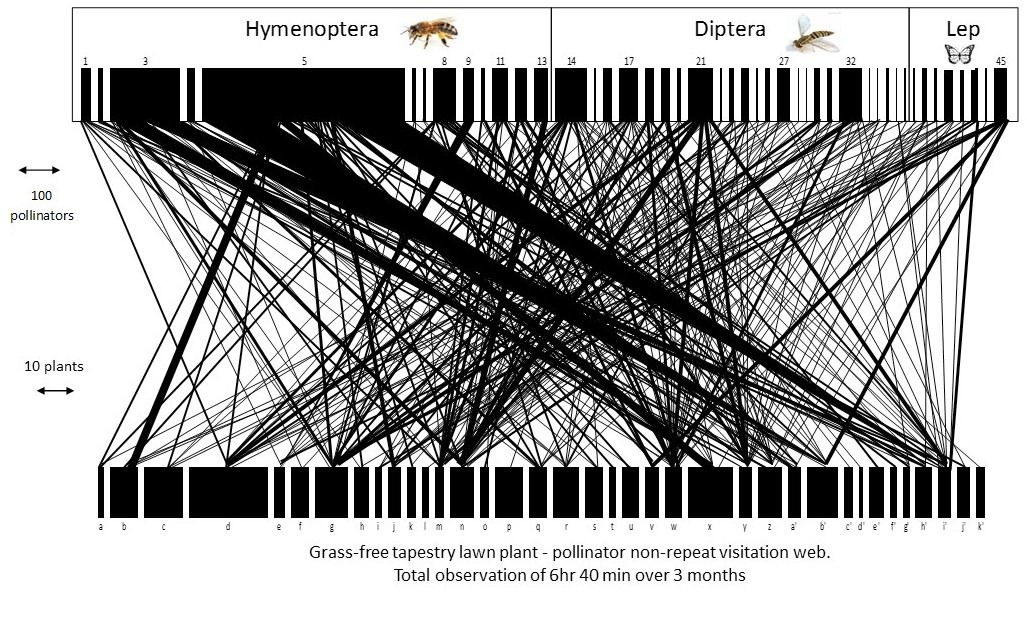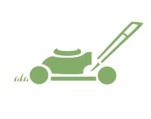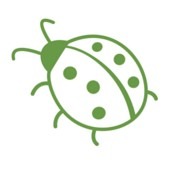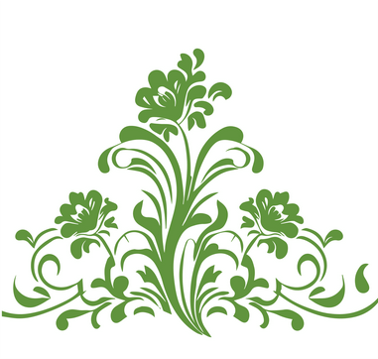Grasses are wind-pollinated plants. No pollinators required, just a breeze.
Grasses may be food plants for some pollinator larvae (caterpillars) such as the Meadow Brown butterfly, but they provide little sustenance to pollinating insects such as bees (Hymenoptera), hoverflies (Diptera - the second most important pollinators globally), adult butterflies and moths (Lepidoptera), or other nectar-sipping invertebrates.
Tapestry lawns are started purposefully with mowing-tolerant flowering plants, so T-lawns can provide plenty of flowers for pollinators of all sorts.
The attractiveness of T-lawns to pollinators was part of my PhD research. A study over 3 summer months on 0.5m² (1.6ft) lawns indicated that T-lawns are substantially more attractive to pollinators than grass-only lawns. The 12 pollinators that were recorded on grass lawns were observed to be simply resting.
Tapestry lawns were found to be 80 times more attractive to pollinators than just grass, and visited by eight times as many different pollinator species.
Below is shown the contrasting visiting behaviour of three pollinator groups, bees, hoverflies and butterflies & moths.
The graphs above show the basic response of pollinators to T-lawns and grass lawns.
However, the complexity of the interaction is better shown by plant-pollinator webs, as shown below. There is much more activity undertaken by many more pollinators and pollinator species when interacting with T-lawns.
Simply put, T-lawns can be much more attractive and much more useful to pollinators than traditional grass-only lawns.
(Source: Smith, Clark, Grinstead & Fellowes. Unpublished data.)

